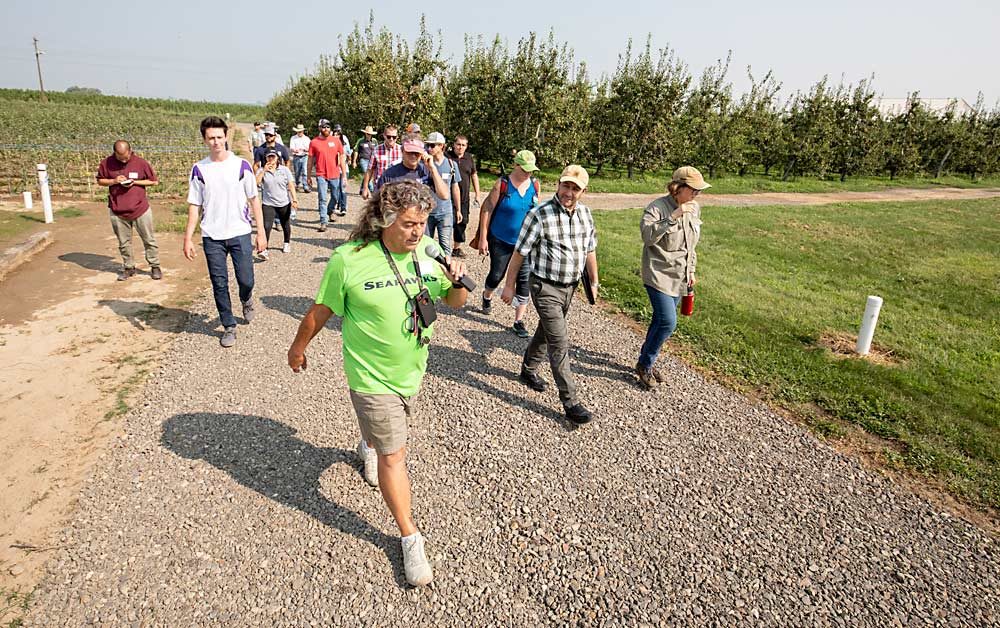
When cutworms showed up in a Bing cherry block near the center of Dain Craver’s newly planted orchard in 1994, the Royal City, Washington, grower began to question his decision to farm organically. But figuring they couldn’t eat what they couldn’t reach, he tried taping aluminum foil around each trunk.
It worked.
“That was a ‘ta-da’ moment,” Craver recalled. “We can do things without insecticide.”
Such trial and error over the decades has made Craver a go-to expert in organic fruit production and the 2019 Good Fruit Grower of the Year.
Craver first entered organics when he planted his orchard in 1993 and noticed his ground was not as fertile as other areas. Assuming he couldn’t produce at the volumes of conventional growers, he sought a niche in organic premiums.
Organic orchards were around in the mid-1990s, but they were small and sold to specialized markets in the Puget Sound area. Craver consulted for a few growers trying organics and believed he could do better. Meanwhile, mating disruption was just maturing as a technique for codling moth control, giving him a tool not previously available.
But his road was not easy.
Crop load management was an early challenge. In 1995, he learned of lime sulfur during a visit with a Fuji grower in Japan. He knew of a few orchardists using lime sulfur with spray oil, but he and his orchard managers tinkered with rates of lime sulfur alone, over-thinning and under-thinning through trial and error before coming up with a reliable program that prevented vigorous semidwarfing rootstocks from pushing trees into a biennial cycle. His fire blight and mildew rates went way down, too.
“Those were the things we were learning back in the ’90s,” Craver said.
About 10 years ago, black cherry aphids infested some of his larger trees in the same block that had the cutworm problem. He studied up and observed for hours, determining ants were carrying the aphids from tree to tree to farm honeydew. His foil trick did not stop them. Neither did cellophane or wax paper. He almost gave up on organic certification in the block before he found Tanglefoot, an organic paste which he applied to the trunks. After three applications, the ants finally stopped.
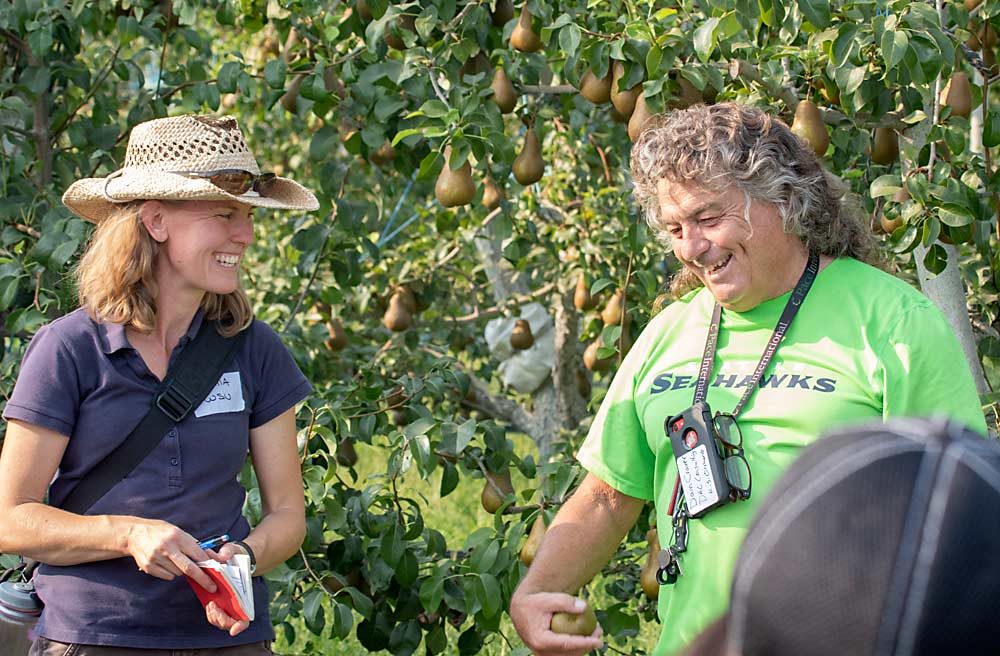
Thoughts on the future
Craver sees some challenges for organic fruit production.
Loss of tools is one. Some of the advocates who lobby the organics board seem to want to reduce production agriculture to backyard gardening, he said. The fruit industry already has lost antibiotics as an organic measure.
The rise of spotted wing drosophila is among the biggest new problems for organic cherry growers because it shows up so late in the season that the broad-spectrum Entrust is one of the few organic tools available. He is hoping for a marketable attract-and-kill product.
“Many people are dropping out of cherry organic because of spotted wing,” he said. “I’m staying with it.”
A resurgence of codling moth poses a problem for organic apple growers, too, he said, though he has high hopes for an aerial sterile release program being commercialized and tested throughout the state. He participates in the test program. A drone company shows up every Friday to release irradiated moths at $360 per acre, about the same price he spends on CYD-X — a granular virus that attacks codling moth. That cost does not include the tractor operation and man-hours required to apply the virus. He suspects the sterile release work will improve enough to eventually replace mating disruption.
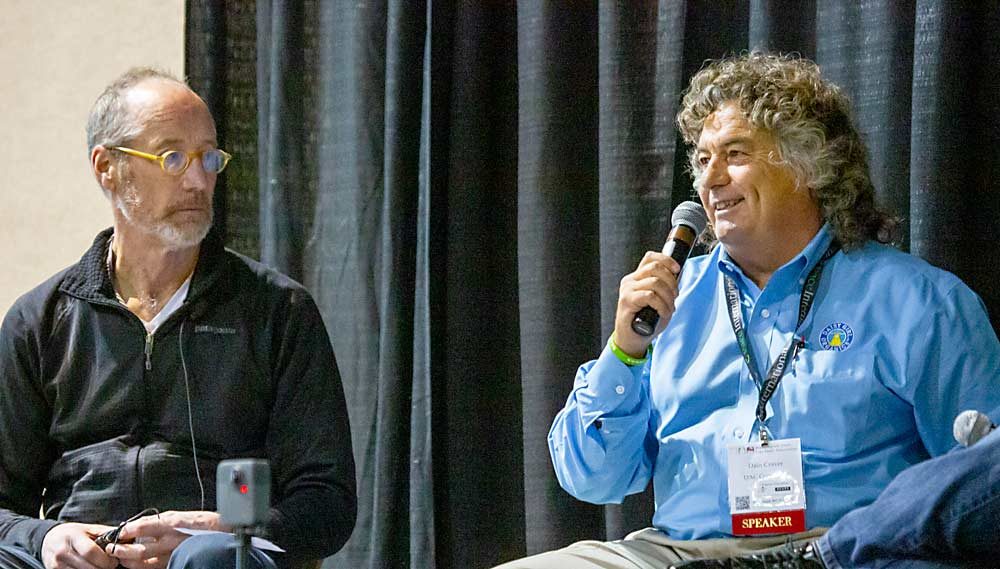
Willingness to share
Craver is often lauded for his willingness to share his ideas and experiences. His work as a consultant gives him opportunities at neighboring orchards, while he frequently speaks at grower meetings and hosts field days.
“I can’t remember him ever saying no,” said Karen Lewis, a Washington State University Extension specialist who has collaborated with Craver on research projects, tours and fruit school presentations.
Early on, not all growers embraced Craver’s ideas, said David Granatstein, a retired professor of sustainable agriculture at WSU. But that didn’t stop Craver. With his trademark enthusiasm and booming voice, he made his best case for change and always steered the conversation back to money, couching his organic advice in concepts such as premium prices, packouts and return on investment.
“Then people start to pay attention,” Granatstein said. Today, organic apples account for about 18 percent of Washington’s acreage.
Craver has served as a member of Washington’s Organic Advisory Board and as the chair of the entomology committee for the Washington Tree Fruit Research Commission. He still lobbies to the U.S. Department of Agriculture’s National Organic Standards Board.
His biggest piece of advice for young growers in organics today: patience. He doesn’t claim to have invented all of his favorite strategies — fostering leafroller parasitoids through wild roses, letting black cherry aphids build up on below-canopy shoots before snipping them off, letting minor pests such as the western tentiform leafminer build up to attract predators — but he has been willing to take time to let them work.
“Do not overreact,” he tells his consulting clients. “That’s why it’s so important to have a good scout team out there.”
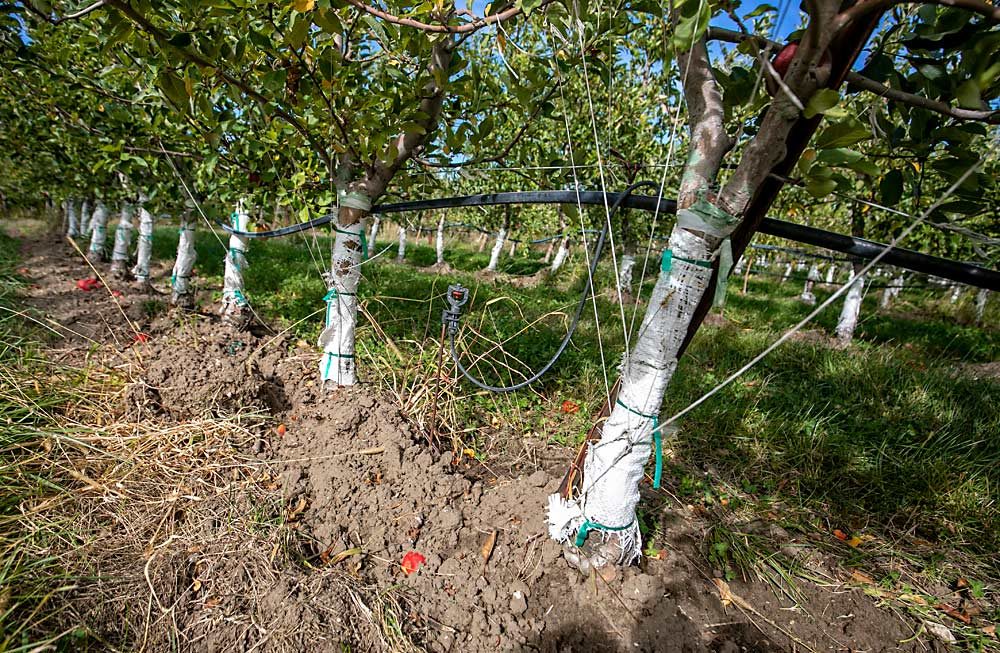
Passion for teaching
Bug and disease scouts are a passion for Craver, and a cornerstone practice. So is education.
To date, he has sent 35 employees through Wenatchee Valley College’s Hispanic Orchard Employee Education Program, a certificate program for farm employees seeking management positions. The program includes IPM classes.
One former student, Jose Ramirez, is a fellow orchard owner and manager in Royal City. Ramirez, a past chair of the Washington State Tree Fruit Association, attributes much of his own success to Craver and knows others who could say the same.
Ramirez, also Craver’s business partner in the proprietary cultivar Rosa Lynn, could not be more different from his longtime friend. Quiet and shy, he is the yin to Craver’s verbose yang. But the two approach their work with the same curiosity.
One of Craver’s best traits, Ramirez said, is that he never just dictates techniques or instructions to his workers. He makes sure they know the reasons behind the horticultural practices he asks for, and he even rolls up his sleeves to learn along with them.
He makes sure we are “understanding the whys,” Ramirez said. “He’s a big educator.”
—by Ross Courtney

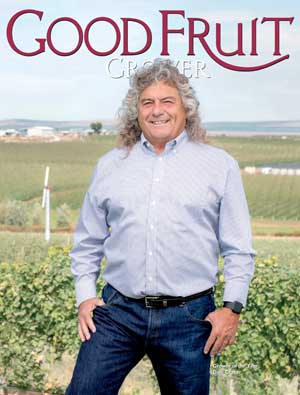





Leave A Comment